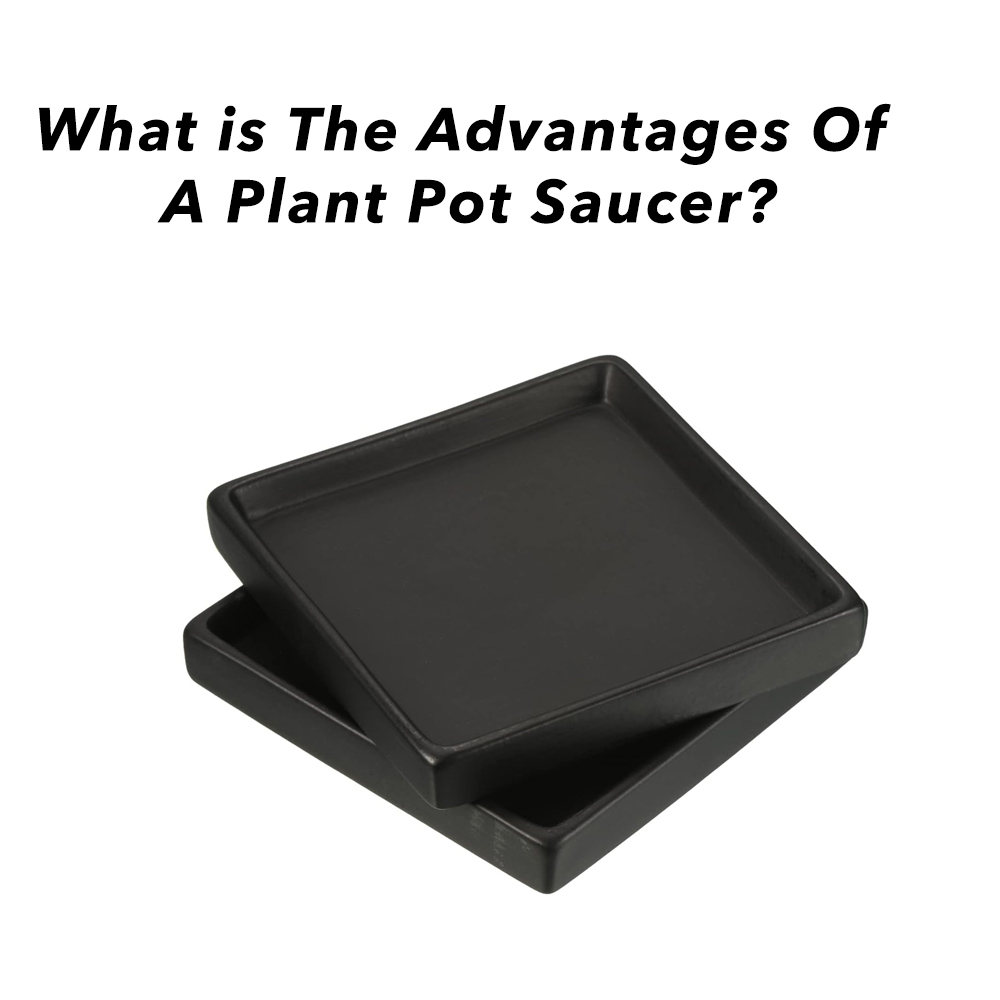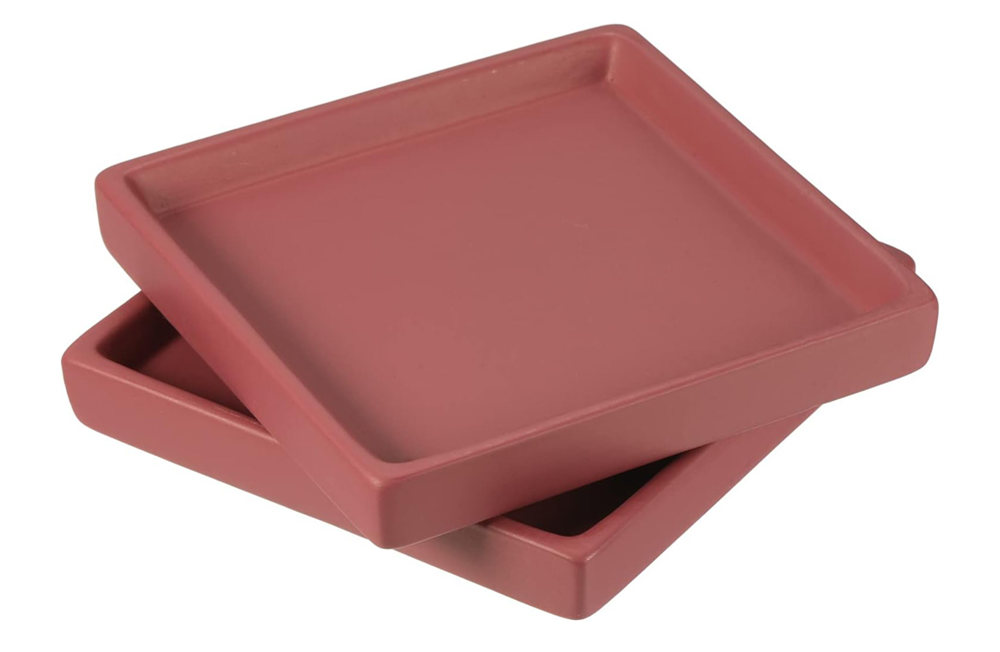What is the Advantages of a plant pot saucer?
Time of issue: 2024-04-16 12:19:36
Understanding the purpose and benefits of using a plant pot saucer is essential for anyone cultivating plants in containers. Plant pot saucers are commonly found beneath pots as a separate component, and while they might seem like a simple addition, they play several significant roles in the health of the plant and the protection of surfaces. This article explores why plant pot saucers are a useful accessory in gardening and how they contribute to better plant management.
The Function of Plant Pot Saucer?
1. Water Management
One of the primary functions of a plant pot saucer is to catch excess water that drains out of the pot. This is particularly important for indoor plants or those kept on sensitive surfaces such as wood decks or indoor flooring. Without a saucer, water can escape after watering, leading to stains, wood rot, or the accumulation of unwanted moisture in areas that can be damaged by water.
2. Preventing Water Waste
Saucers help conserve water by catching runoff that can be reabsorbed by the plant's roots. This is especially beneficial in hotter climates or during dry spells where every bit of moisture is valuable. Plants can absorb this leftover water at a later time, reducing the need for frequent watering and making more efficient use of water.
3. Providing Humidity
For plants that thrive in more humid environments, saucers can be used strategically to increase humidity levels around the plant. This can be achieved by allowing water to collect in the saucer and evaporate naturally, creating a microclimate with higher moisture content around the plant. This technique is particularly useful for tropical plants that benefit from higher humidity.
4. Protecting Surfaces
Plant pot saucers serve as a barrier between the pot and the surface on which it sits. This protection is crucial for preventing water damage and soil stains on floors, furniture, and other surfaces. Saucers also help avoid the build-up of salts and minerals that can leach out of the potting soil after watering, which could mark or damage indoor surfaces.
5. Enhancing Aesthetic Appeal
Beyond functionality, saucers can also enhance the aesthetic appeal of potted plants. They come in various materials, colors, and designs that can complement or match the pot, contributing to the overall décor of a room or garden. Choosing a saucer that fits well with the design of the plant pot and the surrounding environment can create a more visually appealing display.
6. Controlling Pests and Diseases
Saucers can help in the management of pests and diseases. By containing excess water, saucers prevent the establishment of overly damp conditions around the base of the pot, which can attract pests like mosquitoes and foster fungal growth. However, it's important to regularly empty saucers to avoid these issues, as standing water can become a problem if left unchecked.
7. Ease of Maintenance
Using saucers under plant pots makes maintenance easier. They allow for cleaner and quicker clean-ups after watering and can be easily moved for pot and saucer cleaning without disturbing the plant. This ease of maintenance helps gardeners and homeowners keep their plants and surrounding areas tidy and healthy.
How big should the flower pot and saucer be?
Choosing the correct size for a plant pot saucer is crucial to effectively manage water drainage and protect surfaces beneath plant pots. The size of the saucer plays a significant role in both the health of the plant and the cleanliness of the environment where the pot is placed.
1. Sizing the Saucer to the Pot
The saucer's size should primarily correspond to the size of the plant pot it is intended to accompany. Here are some key considerations:
Diameter Compatibility: The diameter of the saucer should be larger than the base of the pot but not excessively so. Typically, a saucer should extend at least 1-2 inches beyond the rim of the pot on all sides. This ensures that any water that drains through the pot has sufficient space to collect without spilling over.
Proportionality: While it is important for the saucer to be larger than the bottom of the pot, an overly large saucer can look disproportionate and may collect too much water, potentially leading to issues if not emptied regularly. A saucer that is just the right size will catch necessary drainage and can easily be emptied and cleaned.
2. Considering Plant and Pot Size
The size of the plant and its corresponding pot also affects the choice of saucer size:
Small Pots: For smaller pots (about 4-6 inches in diameter), a saucer with an additional 1-2 inches in diameter provides adequate space for water collection without taking up unnecessary space.
Medium to Large Pots: For pots that are 8 inches in diameter and larger, the saucer should ideally extend 2-3 inches beyond the pot’s base to ensure that it can catch a larger volume of water, especially for plants that require a lot of water.
Very Large Pots: In the case of very large or oversized pots, ensuring that the saucer can handle the increased water flow without overflowing is critical. Saucers for these pots might need to be significantly larger than the pot’s base.
3. Material Considerations
The material of the saucer can also influence the size and type you might choose:
Ceramic or Terracotta Saucers: These materials are heavier and more stable, making them a good choice for larger or top-heavy pots. However, ensure that the saucer’s weight can be managed if the pot and saucer need to be moved.
Plastic Saucers: Lightweight and versatile, plastic saucers are widely available in various sizes. They are easy to move and clean but may need to be weighted down for large pots in windy conditions.
Metal Saucers: Durable and often decorative, metal saucers can add a stylistic element to your plant setup. Ensure they are treated to resist rust and corrosion if used outdoors.
How tall should the plant pot saucer be?
Determining the appropriate height for a plant pot saucer is an important aspect of container gardening that often goes overlooked. The height of the saucer plays a crucial role in effective water management and protection of the surfaces on which plant pots are placed.
1. Purpose of the Saucer Height
The primary function of a saucer is to catch and hold the excess water that drains out of the pot after watering. The height of the saucer is key in determining how much drained water can be contained without spilling over. Here’s what to consider:
Water Retention: A taller saucer can hold more water, which is beneficial if you tend to water heavily or if the plant is particularly thirsty. This prevents water from overflowing and damaging indoor or delicate outdoor surfaces.
Evaporation Rate: A deeper saucer may slow the rate of water evaporation, maintaining humidity around the plant, which is beneficial for some types of plants that thrive in more humid environments.
2. Ideal Saucer Height
While there is no one-size-fits-all answer, there are general guidelines to help you choose the right saucer height:
Standard Height: Most standard saucers are about 1 to 2 inches tall. This height is sufficient to catch and hold the initial surge of drainage while being low enough to not be visually obtrusive or tip over easily.
Deep Saucers: For larger plants or those in bigger pots that may release more water, a saucer that is 2 to 3 inches tall might be more appropriate. These are particularly useful for outdoor plants where water might not be checked or emptied as frequently.
Shallow Saucers: Some saucers may be less than 1 inch tall and are often suitable for smaller pots or for plants that require less water. These can be more aesthetically pleasing but need regular monitoring to prevent overflow.
How shape should the plant pot saucer be?
Selecting the right shape for a plant pot saucer is an important consideration that can impact both the functionality and aesthetic appeal of your plant setup. While it might seem like a simple choice, the shape of the saucer plays a crucial role in its ability to effectively catch water, integrate with various pot designs, and complement your decor.
1. Common Shapes of Plant Pot Saucers
Plant pot saucers typically come in a few standard shapes, each offering specific benefits and challenges:
Round Saucers: The most common shape, round saucers are versatile and can accommodate a wide range of pot shapes, particularly circular pots. They are effective at catching water from any direction, making them a reliable choice for most plant types.
Square and Rectangular Saucers: These are ideal for square or rectangular pots, fitting snugly against the pot's base for a clean, uniform look. They can be particularly useful for placing multiple pots in a row or for fitting pots into corners where space is optimized.

Custom Shapes: Some saucers come in more unique or decorative shapes, such as oval, hexagonal, or even artistically irregular forms. These can be chosen to match specific decor themes or to make a style statement.
2. Considerations for Choosing Saucer Shape
When selecting a saucer shape, consider the following factors to ensure you get both practical and aesthetic benefits:
Compatibility with Pot Shape: The saucer should closely match the shape of the pot to ensure effective water capture without overflowing. Round saucers are generally compatible with most pot shapes, but square or rectangular saucers might be necessary for similar-shaped pots to provide adequate coverage and stability.
Space Efficiency: The shape of the saucer can affect how efficiently space is used, especially in areas where multiple plants are grouped together. Square or rectangular saucers can be more space-efficient in these scenarios, as they align more closely and reduce wasted space between pots.
Aesthetic Harmony: Consider how the shape of the saucer complements the pot and the surrounding environment. A mismatched shape can look out of place, while a harmonious choice can enhance the overall aesthetic of your planting area.
Water Retention: Ensure that the shape of the saucer is adequate to catch and hold the necessary amount of drainage water. Irregular or overly stylized shapes might not be as effective at catching water from all angles, which could lead to messes and potential water damage to surfaces.
Conclusion
A plant pot saucer is more than just a simple tray; it serves multiple functional purposes that help in the effective management of potted plants. From water conservation and humidity control to protecting surfaces and enhancing aesthetic value, the benefits of using a saucer are considerable. Whether for indoor or outdoor use, incorporating saucers into plant care routines can lead to healthier plants and cleaner, more controlled gardening environments.
RECENT POSTS
- The Impact of Ceramic Materials in Energy-Efficient Buildings: Benefits and Applications
2025-12-04
- Top 7 Ceramic Cookware Health Benefits: Why It’s a Safer Choice for Your Kitchen
2025-12-04
- How to Clean Ceramic Planters and Improve Their Lifespan?
2025-11-17
- 15 Best Ceramic Holiday Gift Ideas for 2025: Thoughtful, Elegant & Heartfelt
2025-11-17
- Stoneware vs Porcelain vs Earthenware: Quick Decision Guide
2025-10-09
- Are Ceramic Glazes Food Safe? The Truth Behind the Shine
2025-10-09
- Christmas Decoration Trends That Wow Every Guest
2025-09-18
- Halloween Decoration Trending Ideas with Ceramics For 2025-26
2025-09-18










